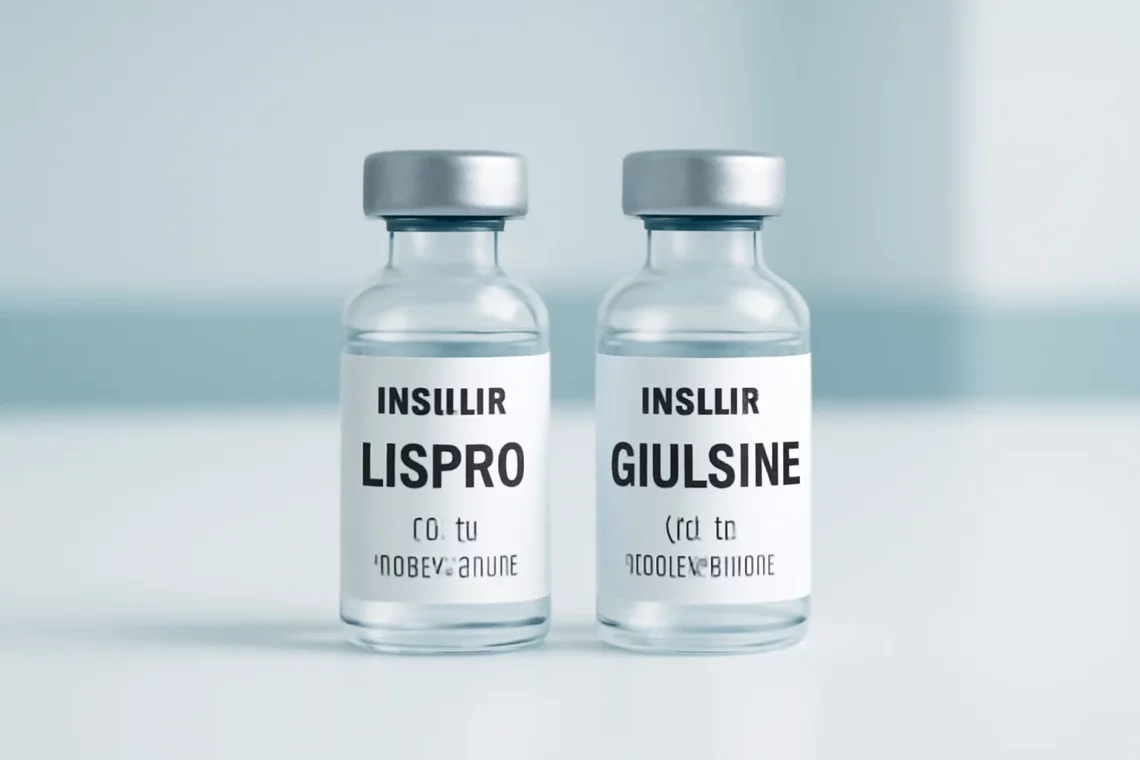
Insulin Lispro vs Insulin Glulisine: Which is Right for You?
Insulin is a crucial hormone produced by the pancreas that plays a significant role in regulating blood sugar levels. For individuals with diabetes, maintaining optimal insulin levels is essential for overall health and well-being. Among the various types of insulin available, rapid-acting insulins such as Insulin Lispro and Insulin Glulisine are commonly prescribed to help manage blood sugar spikes after meals. These insulins are designed to act quickly, allowing for more flexible meal planning and improved glycemic control.
The importance of understanding the differences between these two insulins cannot be overstated. Both Insulin Lispro and Insulin Glulisine have unique properties that can influence their effectiveness, duration of action, and the timing of administration. As diabetes management continues to evolve, healthcare professionals and patients alike must stay informed about the latest options available. The choice between Insulin Lispro and Insulin Glulisine may vary based on individual patient needs, preferences, and responses to therapy.
In this article, we will explore the characteristics, benefits, and potential drawbacks of Insulin Lispro and Insulin Glulisine, providing valuable insights for those involved in diabetes management.
Understanding Insulin Lispro
Insulin Lispro is a rapid-acting insulin analog that was developed to mimic the body’s natural insulin response to food intake. It is known for its quick onset of action, typically starting to work within 15 minutes after injection. This makes it particularly effective for managing postprandial blood glucose levels. The peak action occurs between 30 to 90 minutes after administration, while its overall duration of action lasts for approximately three to five hours.
One of the significant advantages of Insulin Lispro is its ability to offer flexibility in meal timing. Patients can administer this insulin just before meals, allowing for better synchronization with food intake. This feature can be particularly beneficial for individuals who prefer to eat at irregular times or for those who engage in spontaneous social meals.
However, like any medication, Insulin Lispro comes with potential downsides. Some patients may experience hypoglycemia, especially if they do not eat shortly after administration. Additionally, the rapid action of this insulin requires careful monitoring of blood sugar levels to prevent unexpected drops. Patients must also be educated on recognizing the signs of hypoglycemia, which can include dizziness, sweating, and confusion.
Furthermore, Insulin Lispro may not be suitable for everyone. Individuals with certain medical conditions, such as kidney or liver issues, may require adjustments in their insulin regimen. It is essential for patients to work closely with their healthcare providers to determine the best approach to their diabetes management, taking into consideration factors such as lifestyle, dietary habits, and overall health.
In summary, Insulin Lispro offers rapid action and flexibility, making it a popular choice for many individuals managing diabetes. However, it requires careful consideration and monitoring to ensure optimal outcomes.
Exploring Insulin Glulisine
Insulin Glulisine is another rapid-acting insulin analog that serves a similar purpose to Insulin Lispro. It is designed to provide quick control of blood sugar levels following meals, typically working within 10 to 15 minutes after injection. The peak effect is usually observed within one hour, and its duration of action also lasts approximately three to five hours.
One of the notable features of Insulin Glulisine is its formulation, which allows it to be injected immediately before or after meals. This flexibility can be advantageous for individuals who may not have a set eating schedule or who prefer to eat on-the-go. The ability to administer Insulin Glulisine close to mealtime can help reduce the risk of postprandial hyperglycemia, a common concern for those living with diabetes.
In addition to its rapid action, Insulin Glulisine is often favored for its low risk of causing late postprandial hypoglycemia. Patients may find it easier to manage their blood sugar levels when using this insulin, particularly if they are diligent about monitoring their carbohydrate intake.
However, Insulin Glulisine is not without its challenges. As with any rapid-acting insulin, there is a risk of hypoglycemia, particularly if the timing of meals is inconsistent. Patients must be educated about the importance of monitoring their blood glucose levels and recognizing the signs of low blood sugar.
Moreover, it is crucial for healthcare providers to determine the appropriate dosage of Insulin Glulisine for each patient. Individual responses to insulin can vary based on factors such as body weight, activity level, and overall health. Regular follow-up appointments and blood glucose monitoring are essential to ensure that patients achieve optimal control over their diabetes.
In conclusion, Insulin Glulisine provides rapid action and flexibility, making it a viable option for many individuals. As with any insulin therapy, it is important for patients to work closely with their healthcare providers to find the best treatment plan tailored to their unique needs.
Comparing Insulin Lispro and Insulin Glulisine
When considering Insulin Lispro and Insulin Glulisine, several factors come into play that may influence a patient’s choice of therapy. While both insulins are rapid-acting and effective for managing postprandial blood glucose levels, there are subtle differences that may make one option more suitable than the other for certain individuals.
Both insulins have similar onset and duration of action, but clinical studies have suggested that there may be slight variations in how quickly each insulin reaches its peak effect. Insulin Lispro typically peaks around 30 to 90 minutes post-injection, while Insulin Glulisine may peak slightly earlier, around 30 to 60 minutes. This difference can be important for patients who need precise control over their blood sugar levels in relation to meal timing.
Additionally, the formulations of these insulins may result in differences in their absorption rates and individual responses. Some patients may find that one insulin works better for them in terms of blood sugar control and minimizing side effects. For this reason, it is crucial for individuals to discuss their experiences with both insulins with their healthcare providers.
Another consideration is the convenience of administration. Both insulins can be injected immediately before or after meals, but patients may prefer one over the other based on personal preference or lifestyle. Insulin Glulisine, for instance, is often favored by those who may need to administer insulin on-the-go due to its flexibility.
Cost may also be a significant factor in the decision-making process. Depending on insurance coverage and the specific formulations available, one insulin may be more affordable than the other. Patients should consult with their healthcare providers and insurance companies to determine the best options available to them.
Ultimately, the choice between Insulin Lispro and Insulin Glulisine should be based on a comprehensive evaluation of the individual patient’s needs, lifestyle, and response to therapy. Both insulins have proven effective in managing diabetes, and working closely with healthcare providers will help ensure the best possible outcomes.
Conclusion
In summary, Insulin Lispro and Insulin Glulisine are both effective rapid-acting insulins that play vital roles in managing diabetes. While they share similarities in their action, there are distinct differences that may influence a patient’s choice. Understanding the characteristics, benefits, and potential drawbacks of each insulin is essential for effective diabetes management.
Patients must remain vigilant in monitoring their blood sugar levels and maintaining open communication with their healthcare providers. Personalizing insulin therapy is crucial for achieving optimal glycemic control and improving overall health.
As a final note, this article is not intended to serve as medical advice. Individuals should always consult with their healthcare providers regarding diabetes management and treatment options.




